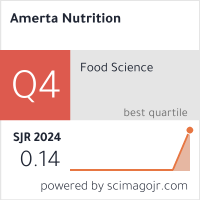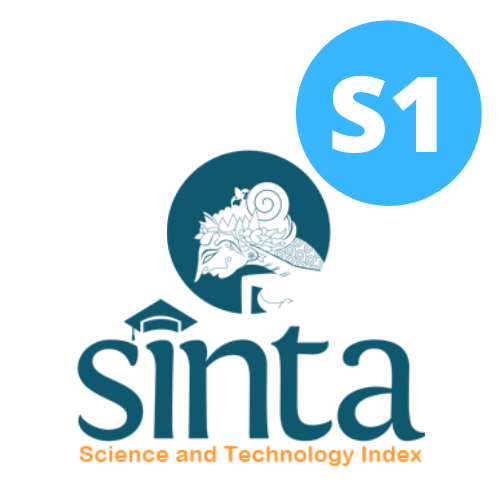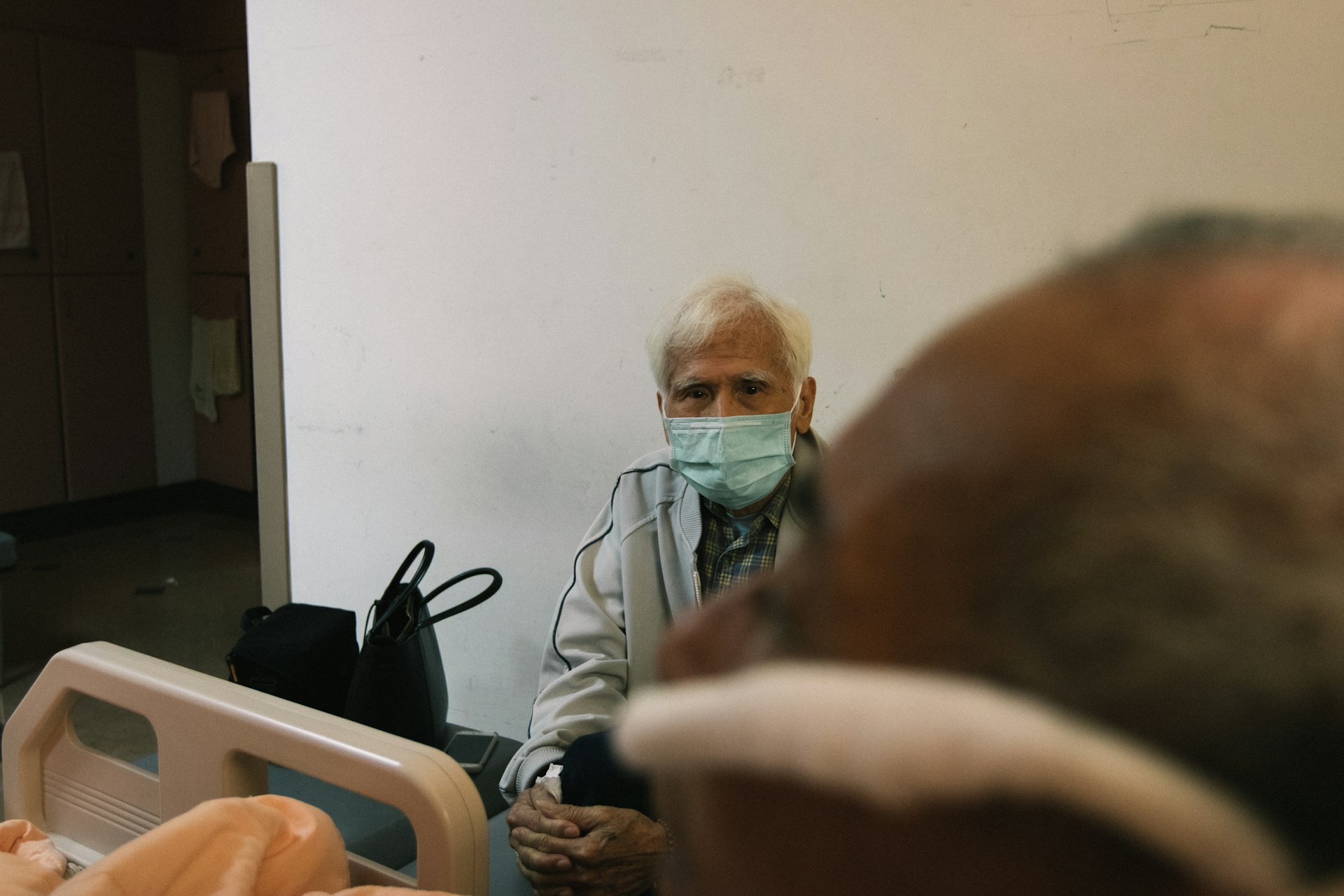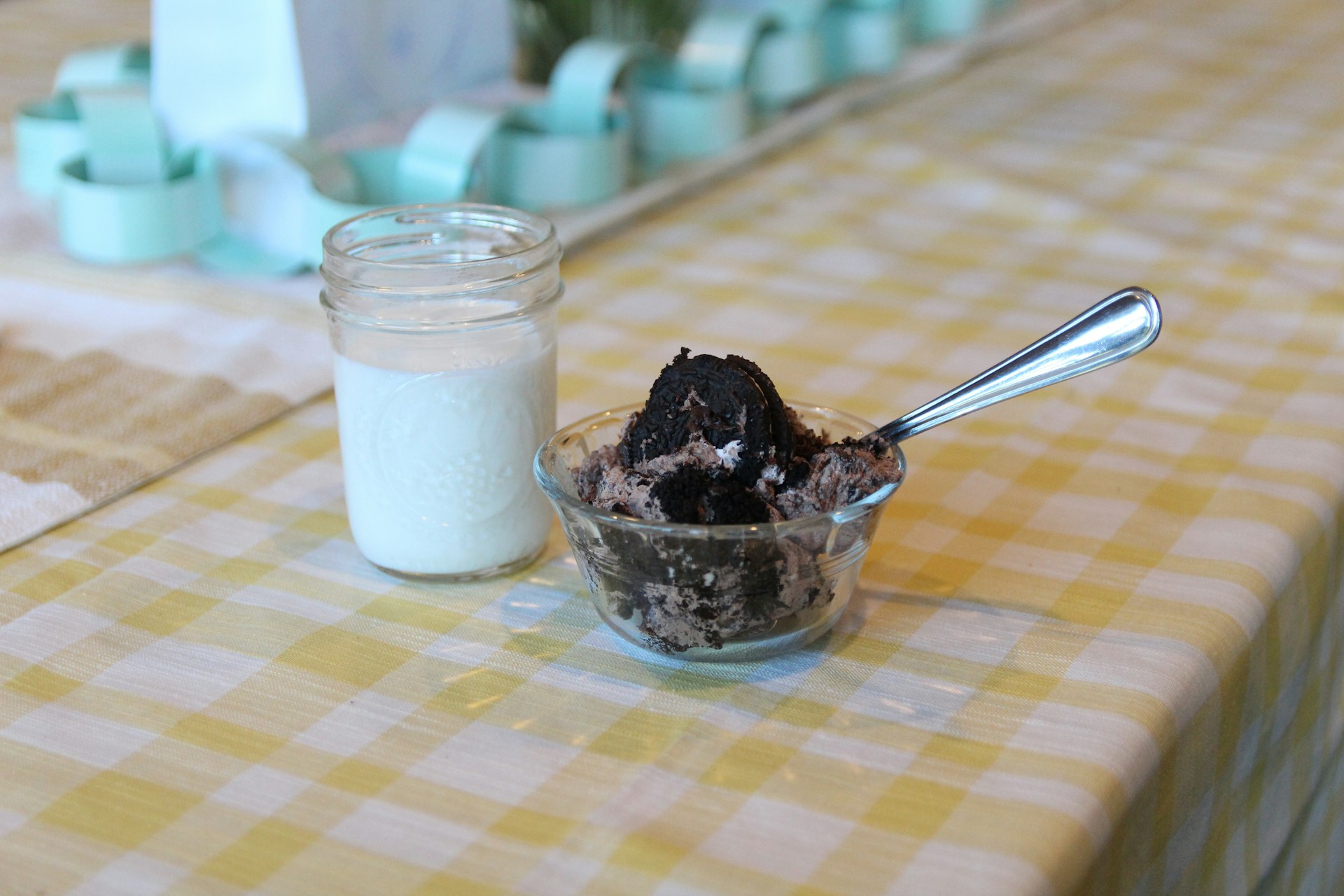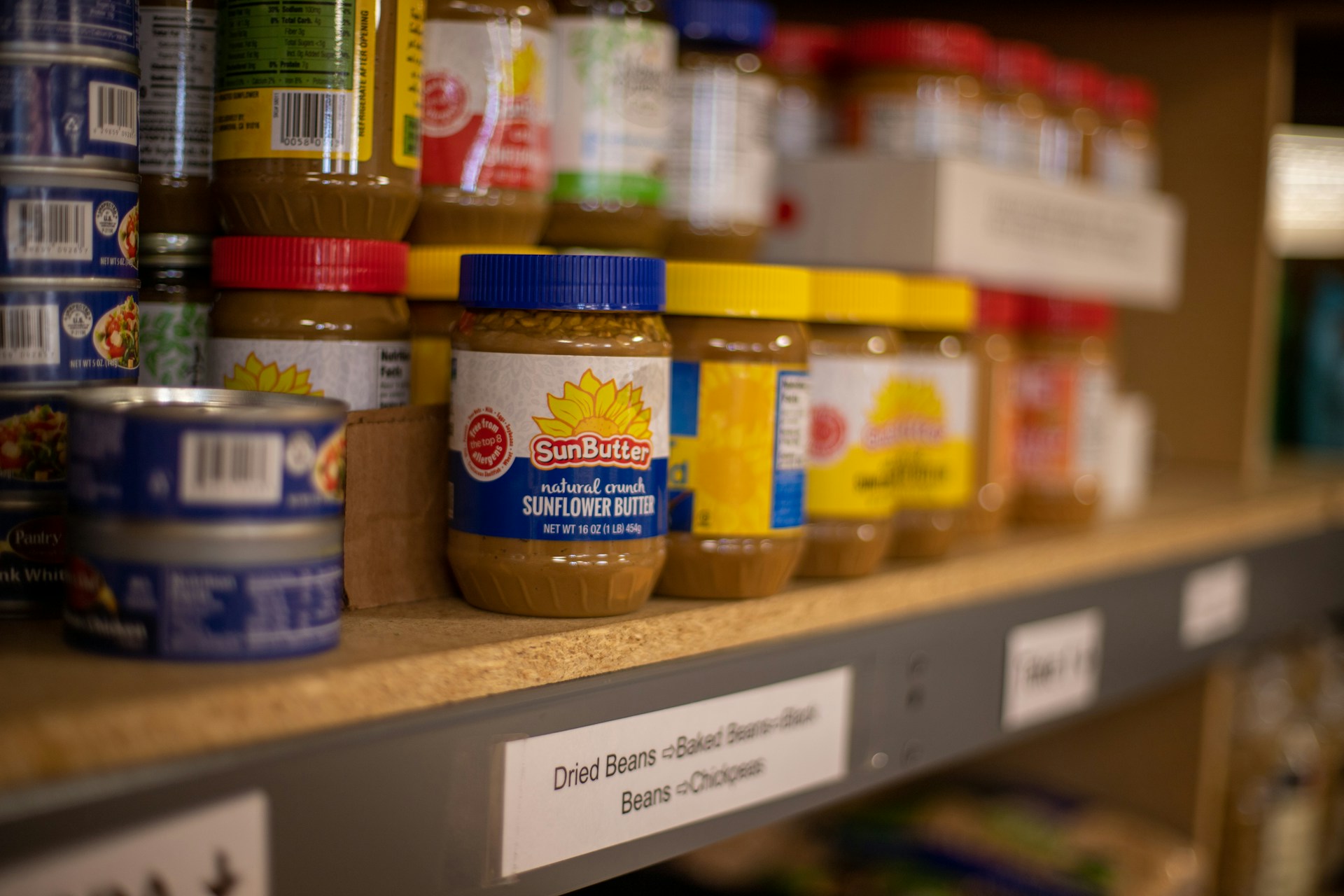Moringa oleifera, Cyclea barbata, Centella asiatica Leaves Extract Intervention Ability to Improve Fetus Development and Blood Protein Levels in Malnutrition Pregnant Model Mice
Intervensi Ekstrak Daun Moringa oleifera, Cyclea barbata, Centella asiatica untuk Meningkatkan Perkembangan Fetus dan Kadar Protein Darah pada Model Mencit Bunting dengan Malnutrisi
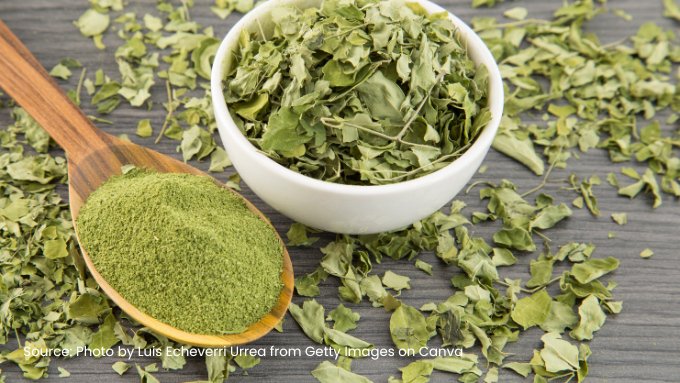
Downloads
Background: Pregnant women experiencing chronic energy deficiency are at risk of giving birth to low birth weight and premature (stunted) babies.
Objectives: In an effort to prevent stunting, the study investigates the effects of a 1:1:1 ratio of Moringa oleifera, Cyclea barbata, and Centella asiatica leaf extract on fetal growth and blood protein levels.
Methods: This research used a laboratory experimental approach with 25 adult female Mus musculus Balb/C mice as a model of malnourished pregnancy, was divided into 5 groups: pre-test, positive control, negative control, placebo and test group. Moringa oleifera, Cyclea barbata, and Centella asiatica leaf extracts are administered to the test group and positive control in 1:1:1 ratio.
Results: The study results indicated that in pregnant mice without malnutrition receiving a mixture of Moringa oleifera, Cyclea barbata, and Centella asiatica leaf extracts, the average fetal body length was 9.7% higher and their weight was 7.4% heavier than pregnant mice with experiencing chronic energy deficiency.
Conclusions: The administration of Moringa oleifera, Cyclea barbata, and Centella asiatica leaf extract can contribute to improving fetal development and blood protein levels. However, its effectiveness is more pronounced in normal pregnancies than in pregnancies with chronic energy deficiency as it can prevent stunting.
INTRODUCTION
Pregnant women facing low energy and protein intake are susceptible to developing chronic energy deficiency conditions. A risk factor of this condition is an upper arm circumference <23.5 cm, which leads to the birth of low-weight and premature babies1. The repercussions of birthing low low-weight baby include increased security risks, as well as impaired growth and development of the child. Furthermore, chronic energy deficiency can indirectly contribute to maternal death. Insufficient consumption of essential macronutrients and micronutrients during pregnancy may lead to nutritional issues such as anemia and persistent protein-energy deficits. This elevates the likelihood of delivering babies with low birth weight, as well as increasing maternal and infant mortality2.
Stunting not only results in reduced height but also hinders children from reaching their full growth potential. Early deficiencies in diet can lead to increased mortality rates among infants and children due to illnesses and long-term posture issues in adulthood. Furthermore, decreased cognitive abilities associated with stunting result in long-term economic losses for Indonesia3. The initial 1000 days of life represent a crucial period, signifying the onset of stunting cases with enduring consequences extending to the subsequent "1000 Days of Nutrition." Educate the public about the importance of the first 1000 days of a child's life in implementing nutrition to ensure optimal growth and development4.
Research onMoringa oleiferahighlights the health advantages of its leaves, pods, seeds, and flowers. Safaringga’s study revealed thatMoringa oleiferaleaf extract can significantly boos breast milk production, as evidenced by a p-value 0,000<0,055.Moringa oleiferaleaves demonstrate the potential to enhance breast milk production, as indicated by improvements in infant weight, urination frequency, fecal expulsion frequency, and breastfeeding6. Tri Suhartini’s, 2018 study revealed that biscuits containingMoringa oleiferaleaves had a significantly higher protein and calcium contents, with increases of 18.2% and 78,97%20. The leaves contain essential amino acids ensuring the suitability for consumption by children with imperfect digestion to meet protein needs. The body has numerous roles for essential amino acids, which influence various organ and cell functions7.
Cyclea barbataplants thrive in lowland areas situated approximately 800 meters above sea level. Phytochemical analysis of the leaves, conducted using maceration and infusion methods, revealed the presence of flavonoid, alkaloid, saponin, and tannin. In Mahadi's study on phagocytic activity,Cyclea barbataleaf extract in ethyl acetate exhibited the highest phagocytic properties, outperforming chloroform and ethanol extracts based on thin-layer chromatography results. The ethyl acetate extract demonstrated potent immunomodulatory and antioxidant properties due to rich content of phenolic, flavonoids, tannins, and terpenoids8. Antioxidants play a crucial role in protecting body cells from oxidative stress and free radicals. Ensuring sufficient intake of specific antioxidants like vitamin C, vitamin E, and selenium during pregnancy promotes healthy fetal development by lowering the chances of oxidative stress9;10. Furthermore, protein is an essential nutrient required for supporting fetus growth and tissue development during pregnancy11;12. Certain antioxidants, such as vitamin C and E, can impact protein metabolism within the body by facilitating absorption and collagen formation, essential for maintaining tissue structure.
Centella asiatica(L) contains a range of active compounds such as saponins, alkaloids, flavonoids, tannins, triterpenoids and steroids, among others. These substances include antioxidants that offer various health benefits to humans. Furthermore,Centella asiatica(L) contains minerals such as magnesium, calcium. potassium, sodium. iron, phosphorus, along with pectin, amino acids, essential oils, and B vitamins. The application of freshCentella asiaticaleaves and its decoction has been shown to enhance the memory of experimental animals, particularly mice with brain cell necrosis. Expansive study efforts have led to the development ofCentella asiaticainto a supplement and functional food product. These items encompass jelly candies and lozenges containingCentella asiaticaextract. The jelly candies are infused withCentella asiaticaextract to enhance children's memory, while the lozenges utilizeCentella asiaticaextract with mannitol solvent as a memory-enhancing agent. Administration of its ethanol extract has shown efficacy in enhancing bone calcification and preventing stunting in zebrafish, yielding a 99.60% increase in body length from pre-to post-hatching stages.Centella asiaticaextract containing 70% of a type of acid (asiatic acid, madecassic acid, asiatoside) has therapeutic potential in addressing skin problems, blood flow issues, and swollen veins. It helps the connective tissue work better through the augmentation of glycosaminoglycan that fills the space between the collagen fibers, thereby promoting tissue health. The plant extract also protects the heart by reducing inflammation, cell death, and oxidative stress.Asiatic acid,a key compound, has shown healing properties and efficacy in vivo by modulating molecular pathways in mice. It also reduces the amount of ROS in heart cells exposed to hydrogen peroxide in vitro. The struggle to reduce stunting rates in Indonesia must begin by improving the nutritional status of young girls, pregnant women and fetuses during period “1000 days” of their lives. IntegratingMoringa oleifera, Cyclea barbata,andCentella asiaticaleaves as alternative measures can significantly contribute to addressing the stunting issue. This study aims to investigate the impact ofMoringa oleifera, Cyclea barbata,andCentella asiaticaleaf extracts on protein levels in the blood and fetal development, aiming to prevent stunting.
METHODS
An experimental study that was conducted in the laboratory used adult femaleMus musculusstrain Balb/C mice as models for pregnant animals experiencing malnutrition. The
Masan, L., Haryanti, Y. & Juliansyah, E. Riwayat Ibu Bersalin Kekurangan Energi Kronik Berhubungan dengan Kejadian Bayi Berat Lahir Rendah. J. Sains Kebidanan 4, 7–13 (2022).
Tshotetsi, L., Dzikiti, L., Hajison, P. & Feresu, S. Maternal factors contributing to low birth weight deliveries in Tshwane District, South Africa. PLoS One 14, e0213058 (2019).
Intan Fazrin., L. F. Family Motivation In The Provision Of Nutrition With Stunting Events In Tons Of Together In Pujiharjo Village, Tirtoyudo District. J. Glob. Res. Public Heal. 6, 56–65 (2021).
Harskamp-van Ginkel, M. W. et al. Potential determinants during ‘the first 1000 days of life’ of sleep problems in school-aged children. Sleep Med. 69, 135–144 (2020).
Safarringga, A. & Putri, R. D. Pengaruh pemberian ekstrak daun kelor terhadap produksi asi pada ibu nifas. J. Trop. Med. Issues 1, 9–15 (2021).
Johan, H., Anggraini, R. D. & Noorbaya, S. Potensi Minuman Daun Kelor Terhadap Peningkatan Produksi Air Susu Ibu (ASI) Pada Ibu Postpartum. Sebatik 23, 192–194 (2019).
Dr.Ari Wibowo, Dr.dr. Moch Yuus, Septa Katmawatnti, A. S. Tepung Daun Kelor, Glutamin, Dan Glukosa Unhidrat Pada Performa Atlet. (2021).
Mahadi, R. et al. Immunomodulatory and Antioxidant Activity of Green Grass Jelly Leaf Extract (Cyclea Barbata Miers.) In Vitro. J. Trop. Biodivers. Biotechnol. 3, 73 (2018).
Jamshidi-Kia, F. et al. Battle between plants as antioxidants with free radicals in human body. J. Herbmed Pharmacol. 9, 191–199 (2020).
Obeagu, E. I., Ubosi, N. I. & Uzoma, G. Antioxidant Supplementation in Pregnancy: Effects on Maternal and Infant Health. Int. J. Adv. Multidiscip. Res 10, 60–70 (2023).
Farias, P. M. et al. Minerals in pregnancy and their impact on child growth and development. Molecules 25, 5630 (2020).
Manta-Vogli, P. D., Schulpis, K. H., Dotsikas, Y. & Loukas, Y. L. The significant role of amino acids during pregnancy: nutritional support. J. Matern. Neonatal Med. 33, 334–340 (2020).
Reddy, Vs., Palika, R., Ismail, A., Pullakhandam, R. & Reddy, Gb. Nutrigenomics: Opportunities & challenges for public health nutrition. Indian J. Med. Res. 148, 632 (2018).
Laurus, G., Fatimah, S. N. & Gurnida, D. A. Pattern of Energi and Protein Intake among Stunted Children Aged 3–5 Years in Jatinangor. Althea Med. J. 3, 364–370 (2016).
Kasolo, J. N., Bimenya, G. S., Ojok, L., Ochieng, J. & Ogwal-Okeng, J. Phytochemicals and uses of Moringa Oleifera leaves in Ugandan rural communities. J. Med. Plants Res. 4, 753–757 (2010).
Putra, A. I. Y. D., Setiawan, N. B. W., Sanjiwani, M. I. D., Wahyuniari, I. A. I. & Indrayani, A. W. Nutrigenomic and biomolecular aspect of moringa Oleifera leaf powder as supplementation for stunting children. J. Trop. Biodivers. Biotechnol. 6, 1–15 (2021).
Leone, A. et al. Cultivation, Genetic, Ethnopharmacology, Phytochemistry and Pharmacology of Moringa Oleifera Leaves: An Overview. Int. J. Mol. Sci. 16, 12791–12835 (2015).
Susanto, H., Hernowati, T. E. & Indra, M. R. Efficacy of Moringa Oleifera Leaf Powder as Nutrigenomic Therapy Against Malnutrition and Metabolic Perturbation Related Diseases: a Preliminary Study of Madura Islands Variety. in Proceedings of the 1st International Conference in One Health (ICOH 2017) (Atlantis Press, Paris, France, 2018). doi:10.2991/icoh-17.2018.53.
Dallio, M. et al. Nutrigenomics and Nutrigenetics in Metabolic- (Dysfunction) Associated Fatty Liver Disease: Novel Insights and Future Perspectives. Nutrients 13, 1679 (2021).
Huang, W.-L., Tung, C.-W., Liaw, C., Huang, H.-L. & Ho, S.-Y. Rule-Based Knowledge Acquisition Method for Promoter Prediction in Human and Drosophila Species. Sci. World J. 2014, 1–14 (2014).
Ma, Z. F., Ahmad, J., Zhang, H., Khan, I. & Muhammad, S. Evaluation of phytochemical and medicinal properties of Moringa (Moringa Oleifera) as a potential functional food. South African J. Bot. 129, 40–46 (2020).
Rodríguez-Cruz, M. & Serna, D. S. Nutrigenomics of ω-3 fatty acids: Regulators of the master transcription factors. Nutrition 41, 90–96 (2017).
Copyright (c) 2024 Amerta Nutrition

This work is licensed under a Creative Commons Attribution-ShareAlike 4.0 International License.
AMERTA NUTR by Unair is licensed under a Creative Commons Attribution-ShareAlike 4.0 International License.
1. The journal allows the author to hold the copyright of the article without restrictions.
2. The journal allows the author(s) to retain publishing rights without restrictions
3. The legal formal aspect of journal publication accessibility refers to Creative Commons Attribution Share-Alike (CC BY-SA).
4. The Creative Commons Attribution Share-Alike (CC BY-SA) license allows re-distribution and re-use of a licensed work on the conditions that the creator is appropriately credited and that any derivative work is made available under "the same, similar or a compatible license”. Other than the conditions mentioned above, the editorial board is not responsible for copyright violation.






